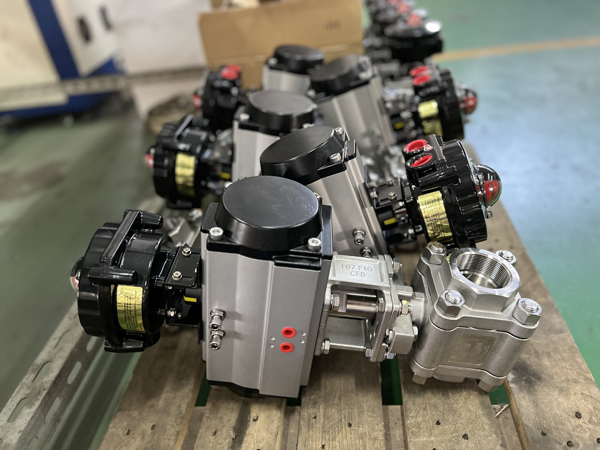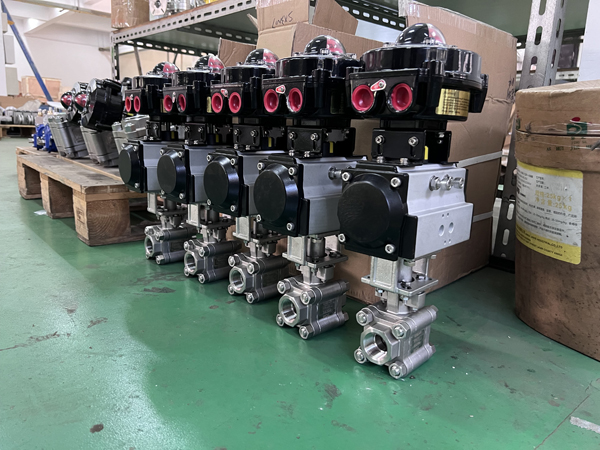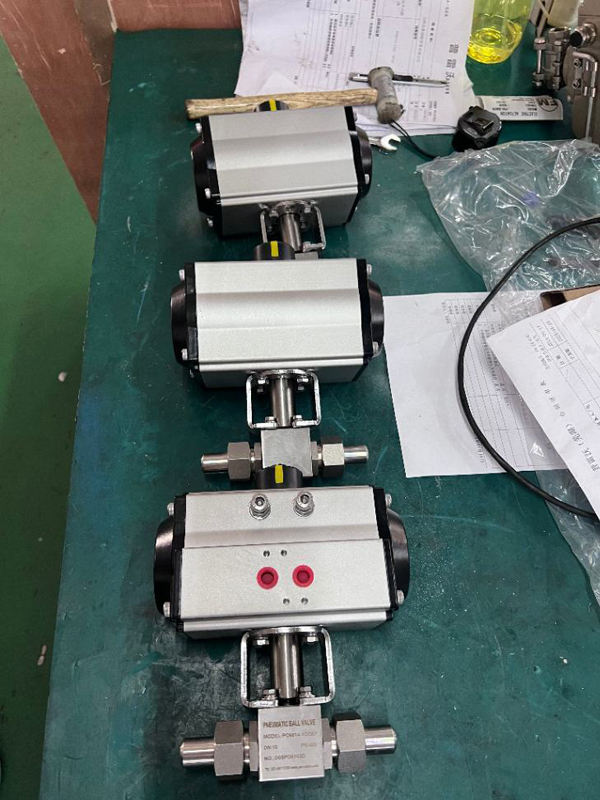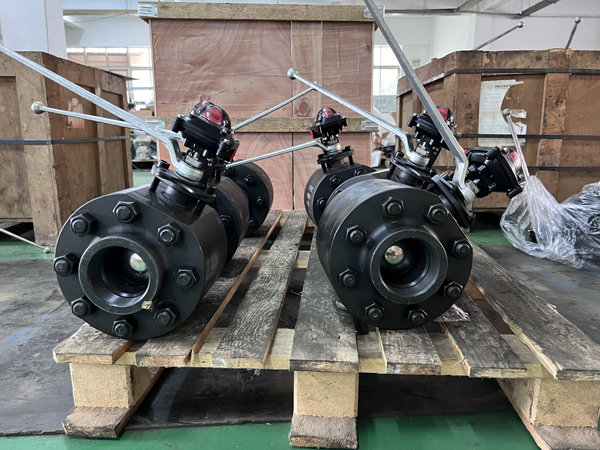Understanding valve markings is at the heart of selecting the right components for industrial systems. One label that often stands out is “1000WOG.” While it might appear straightforward, this marking carries significant implications for performance and compatibility, especially for applications utilizing essential valve types like a ball valve, gate valve, or butterfly valve. This designation is crucial when specifying options for pneumatic or electric valve systems, including specialized types such as flanged ball valves. By decoding what “1000WOG” truly signifies, engineers and operators can ensure both the safety and efficiency of their operations. This blog post dives into the technical details and practical relevance of this marking to help you make informed decisions.
Introduction 1000wog
The “1000WOG” marking is a key indicator of a valve’s pressure rating, ensuring compatibility and safety in industrial systems. This specification is critical when choosing components like a pneumatic ball valve or a 3-way ball valve, where precision and reliability are required. From electric ball valves to globe valves and pneumatic control valves, understanding the significance of this rating helps operators make informed decisions for efficient and safe operations.

Overview of the importance of valve markings in industrial setups.
Valve markings are an essential aspect of industrial setups, providing critical information about a valve’s pressure and media compatibility. These markings, such as the “1000WOG” specification, ensure that operators can confidently select components that meet the precise demands of their systems. They help identify whether a valve is suitable for specific applications, like managing water, oil, or gas flows under particular pressure conditions. Proper interpretation of these markings is vital for maintaining safety and preventing failures, as incorrect valve selection can lead to downtime, inefficiencies, or even hazardous situations. By relying on clearly understood markings, operators and engineers can optimize performance, ensure regulatory compliance, and uphold the integrity of their industrial operations.
Brief explanation of “1000WOG” as a common yet vital specification for various valve types.
The “1000WOG” marking is a widely recognized specification that indicates a valve’s ability to withstand up to 1000 psi of water, oil, or gas pressure. This classification is integral to ensuring a valve’s performance and durability in various industrial applications. Found on numerous valve types such as ball valves, gate valves, and globe valves, this marking helps engineers and operators evaluate whether a component can handle specific system demands. Its universal relevance to industrial setups underscores its role in promoting safety, efficiency, and reliability in valve selection and operation.
Mention the significance of proper valve selection for system safety and performance.
Selecting the right valve is a critical component of ensuring both system safety and operational performance in industrial applications. Valves must align with the system’s pressure, media type, and operational demands to prevent potential hazards like leaks, failures, or pressure surges. Proper valve selection, guided by markings such as “1000WOG,” not only safeguards equipment but also enhances efficiency by maintaining optimal flow control and minimizing downtime. Whether it’s a ball valve for precision flow, a globe valve for throttling, or a pneumatic control valve for automated systems, choosing the correct valve type directly impacts the stability and reliability of the entire operation. This precision in selection reduces risks, promotes compliance with safety standards, and maximizes productivity over time.
Understanding the 1000WOG Marking
Define what WOG stands for (Water, Oil, and Gas) and its relevance to valve pressure ratings.
The term “WOG” in valve markings stands for Water, Oil, and Gas, signifying the media types that a valve is designed to handle safely. This specification, often coupled with a numerical pressure rating like “1000WOG,” provides critical insight into the valve’s capability to withstand specific operating pressures across these media. It serves as a universal standard, guiding engineers and system designers in selecting valves that align with the demands of their applications. By understanding the “1000WOG” rating, operators can ensure that the valve will perform reliably under the prescribed conditions, ultimately enhancing system safety and efficiency.

Explanation of “1000” as the maximum pressure (PSI) for specific media conditions.
The “1000” in the “1000WOG” marking represents the maximum pressure, measured in pounds per square inch (PSI), that the valve can safely handle under specific media conditions—namely water, oil, and gas. This value is crucial in determining whether a valve is suitable for the intended industrial application, ensuring it can withstand operational demands without compromising safety or efficiency. By adhering to this pressure limit, system designers and operators can prevent potential failures, optimize performance, and maintain the reliability of equipment in diverse industrial environments.
Importance of this marking for standard applications such as those using ball valves or gate valves in industrial systems.
The “1000WOG” marking holds significant importance for standard applications, especially when utilizing ball valves or gate valves in industrial systems. This pressure rating communicates that the valve can handle up to 1000 psi across water, oil, and gas media, ensuring its suitability for a wide range of operational conditions. For ball valves, often relied upon for precision flow control, or gate valves, designed for full-on or full-off service, this marking provides engineers with the confidence that the valve will perform reliably under specified pressure limits. By adhering to these standardized ratings, system designers can ensure compatibility between components, maintain safety by avoiding over-pressurization, and optimize overall system efficiency. This clarity simplifies the selection process while reducing the risk of costly errors or equipment failure, making “1000WOG” a vital specification in industrial settings.
Types of Valves Relevant to 1000WOG Ratings
Ball Valves and Their Applications
Discuss the functionality of ball valves, including pneumatic ball valves, flanged ball valves, and electric ball valves, under 1000WOG ratings.
Ball valves, including pneumatic, flanged, and electric variants, are highly versatile components in industrial systems, particularly when operating under a 1000WOG rating. The 1000WOG specification guarantees that these valves can reliably handle up to 1000 psi across water, oil, and gas applications, ensuring consistent performance under demanding conditions. Pneumatic ball valves, powered by compressed air, deliver efficient automation for high-cycle operations, while flanged ball valves offer robust connections tailored for high-pressure applications, minimizing potential leaks. Electric ball valves, driven by motorized actuators, provide precise flow control and seamless integration into automated systems. The 1000WOG rating reinforces the functional integrity of these valve types, giving system designers the confidence to deploy them in critical environments requiring durability, safety, and reliability. Such standardization simplifies selection while improving overall operational efficiency and system reliability.
Gate Valves and Pressure Applications
Explore how gate valves manage pressure in systems utilizing the 1000WOG marking.
Gate valves play a critical role in managing pressure within systems designed for the 1000WOG marking, ensuring operational safety and efficiency in industrial environments. The 1000WOG specification signifies that the valve can sustain a maximum pressure of 1000 psi while operating with water, oil, or gas media. Gate valves are primarily utilized for full-on or full-off flow control, which is vital in isolating specific sections of a system or regulating high-pressure conditions effectively. The robust construction of gate valves, combined with the assurance provided by the 1000WOG rating, minimizes risks of pressure-related failures, such as leaks or ruptures. This reliability is especially important in high-demand settings, where maintaining consistent pressure control is essential for preventing malfunctions and protecting connected equipment. Leveraging the 1000WOG rating ensures these valves meet industrial performance requirements, delivering dependable functionality and long-term durability.

Butterfly Valves and Versatility
Highlight butterfly valves’ adaptability in water, oil, and gas systems with similar pressure thresholds.
Butterfly valves are renowned for their adaptability in water, oil, and gas systems, particularly when operating within pressure thresholds comparable to the 1000WOG rating. These valves are designed with a compact, lightweight structure and a rotating disc mechanism, enabling swift and efficient flow regulation or complete shut-off. Their ability to handle substantial pressure levels with minimal maintenance makes them ideal for applications requiring durability and precision. Under similar pressure ratings, butterfly valves excel in offering consistent performance while maintaining cost-efficiency. Additionally, their compatibility with various actuation methods—manual, electric, or pneumatic—enhances their versatility in automated and manually controlled systems. This adaptability ensures that butterfly valves remain a reliable choice for diverse industrial applications, delivering safety, reliability, and seamless integration into high-pressure operations.
Globe Valves for Precision Flow Control
Detail the use of globe valves in regulating precise flow at or near 1000PSI.
Globe valves are essential for regulating precise flow at or near 1000PSI, offering unmatched accuracy and reliability in high-pressure systems. Engineered with a spherical body and a movable disk seated against a stationary ring, globe valves are specifically designed to provide fine-tuned control over fluid flow. This design allows operators to achieve gradual adjustments, enabling precise modulation of flow rates in applications requiring high levels of accuracy. The robust construction ensures that the valve can withstand the demands of high-pressure environments while maintaining consistent performance over time. Their capacity to handle water, oil, and gas media under significant pressure levels makes them ideal for processes such as throttling or flow balancing. With their precision and durability, globe valves are an indispensable component in industrial systems demanding efficient and reliable flow control at elevated pressures.
Pneumatic and Electric Actuators
Briefly describe how pneumatic valves and electric valves enhance control when paired with systems requiring 1000WOG-rated components.
Pneumatic and electric valves play a crucial role in enhancing control within systems equipped with 1000WOG-rated components, providing both precision and operational efficiency. Pneumatic valves utilize compressed air to automate valve actuation, offering rapid response times and reliable performance in demanding applications. They are especially advantageous in environments requiring frequent cycling or where explosion-proof solutions are essential. On the other hand, electric valves leverage motor-driven mechanisms for controlled actuation, delivering exceptional precision and programmability. This makes them ideal for systems requiring meticulous flow regulation and remote operation. When integrated with 1000WOG-rated components, both pneumatic and electric valves ensure compatibility with high-pressure thresholds, improving system reliability and reducing downtime. Their ability to automate and fine-tune operations bolsters overall efficiency and supports the safety and functionality of sophisticated industrial processes.

Practical Considerations for 1000WOG Valves
Selecting the Right Valve for Your System
Factors to consider like system media, operating temperature, and compatibility with options such as 3-way ball valves or pneumatic control valves.
When selecting the right valve for your system, key factors such as system media, operating temperature, and compatibility with specialized options like 3-way ball valves or pneumatic control valves must take center stage. Understanding the system media—whether it’s water, oil, gas, or corrosive substances—is essential, as it determines the material and sealing requirements to prevent contamination or wear. Operating temperature is another critical consideration, as extreme heat or cold can impact valve performance, potentially compromising seals and actuator functionality. Valves like 3-way ball valves offer increased versatility in flow direction, making them ideal for applications requiring diversion or mixing within a single system. Alternatively, pneumatic control valves are suitable for precise automation in high-cycle systems, especially in industries demanding rapid response and reliability. Factoring in these elements ensures you choose a valve that not only performs efficiently but also integrates seamlessly into your operational demands, minimizing downtime and optimizing system longevity.
Understanding Media Limitations
Why WOG pressure ratings typically cover ambient conditions and media properties (e.g., viscosity, pH).
WOG pressure ratings, standing for Water, Oil, and Gas, are specified under the assumption of ambient conditions and standard media properties to ensure reliable valve performance and system safety. These ratings account for factors like viscosity and pH to prevent material degradation, reduce friction-related wear, and maintain functional integrity under normal operating environments. For instance, low-viscosity fluids flow easily and create minimal resistance, aligning well with standard ratings, while highly viscous or corrosive media may exceed the tolerances of a valve designed for general use. Similarly, media with extreme pH levels can erode valve materials if incompatible, compromising performance over time. By adhering to these predefined parameters, manufacturers offer a reliable baseline for valve selection, ensuring system efficacy and reducing the risk of unexpected failures or maintenance needs under typical operating conditions. This approach streamlines the compatibility assessment process and reinforces operational safety across diverse applications.
Ensuring Long-Term Reliability
The role of maintenance and inspections in upholding performance for all valve types, including butterfly valves and electric ball valves.
Routine maintenance and regular inspections are fundamental to ensuring long-term reliability and optimal performance for all valve types, including butterfly valves and electric ball valves. Periodic checks allow operators to identify early signs of wear, corrosion, or misalignment, preventing minor issues from escalating into costly failures. Cleaning valves to remove accumulated debris and residue not only enhances functionality but also extends the lifespan of critical components like seals, actuators, and pivots. For electrically actuated ball valves, inspecting connections, motors, and control systems is vital to maintaining precision and responsiveness in automated operations. Similarly, butterfly valves benefit from lubrication and proper torque adjustments to maintain smooth operation and pressure control. By prioritizing timely repairs and following manufacturer-recommended maintenance schedules, businesses can reduce downtime, ensure system safety, and uphold the efficiency necessary for critical industrial applications.
The Role of Markings in Valve Performance
Explain how markings like 1000WOG guide operators in ensuring valve integrity and operational safety.
Markings like 1000WOG play a critical role in guiding operators to ensure valve integrity and uphold operational safety. These identifiers specify the maximum pressure the valve can handle—1000 PSI for water, oil, and gas—under standard conditions, providing a clear benchmark for its application. By referencing these markings, operators can confidently select valves compatible with their system’s pressure requirements, avoiding overloading that could lead to mechanical failure or hazardous leaks. Additionally, these markings simplify compliance with industry regulations and standards, ensuring that the valve is not only appropriate for the media it will handle but also robust enough to endure the rigors of the operating environment. This clarity reduces guesswork during installation and maintenance, fostering system reliability, extending valve lifespan, and minimizing risks associated with improper valve selection or usage.
Challenges of misinterpreting pressure ratings and how it impacts different types of valves, such as flanged ball valves and pneumatic control valves.
Misinterpreting pressure ratings can lead to significant challenges in the performance and safety of valves like flanged ball valves and pneumatic control valves. Incorrectly matching a valve to a system with higher pressures than specified, for example, can result in structural failures, such as seal blowouts or flange deformations, compromising both operational integrity and safety. Pneumatic control valves, which rely on precise pressure control for operation, may lose their functionality or fail entirely if subjected to pressures outside their rated capacity, affecting system responsiveness and efficiency. Similarly, flanged ball valves, designed to maintain secure connections under specific loads, may experience leakage or joint weakening due to excess strain. These risks underline the critical importance of accurately interpreting pressure ratings like WOG (Water, Oil, Gas) and understanding their limitations within context. By ensuring compatibility between a valve’s specifications and operational demands, operators can mitigate potential safety hazards, extend system longevity, and maintain reliable performance across industrial applications.

FAQ 1000wog
What does 1000WOG mean for a ball valve, and how does it affect its application?
1000WOG stands for a pressure rating of 1000 PSI for Water, Oil, and Gas, indicating the maximum pressure a ball valve can handle under standard conditions. This marking helps operators determine whether a ball valve is suitable for specific system requirements. For instance, in high-pressure applications, selecting a 1000WOG-rated valve ensures durability and prevents issues like leakage or structural failure. Understanding this rating is crucial for achieving reliable performance, especially in industrial setups where precise pressure management is key.
How do 1000WOG markings apply to gate valves and butterfly valves?
For gate valves and butterfly valves, 1000WOG markings function as pressure benchmarks, guiding operators in selecting the correct valve based on system specifications. A gate valve marked with 1000WOG is designed to withstand a maximum of 1000 PSI in systems dealing with water, oil, or gas. Similarly, butterfly valves with the same marking can handle comparable pressures, provided they are made from suitable materials and comply with operational limits. By adhering to these ratings, operators can avoid over-pressurization, which could lead to failures or reduced valve lifespan.
Why is 1000WOG important for pneumatic and electric valve systems?
For pneumatic and electric valves, the 1000WOG marking is vital to ensure operational safety and compatibility within a system. A pneumatic valve subjected to pressure beyond this rating may experience actuator malfunctions or control irregularities, compromising system efficiency. Similarly, electric valves could suffer from damage to their seals or electronic components under excessive pressure. Additionally, in hybrid configurations such as a flanged ball valve with pneumatic or electric actuators, adhering to the 1000WOG rating ensures system reliability and reduces maintenance risks, safeguarding overall performance in demanding industrial environments.
Conclusion 1000wog
Understanding the meaning of 1000WOG in pressure ratings is essential for ensuring the compatibility, safety, and efficiency of various valve systems. Whether you’re working with a pneumatic ball valve, a 3 way ball valve, or an electric ball valve, this marking provides a clear indication of the valve’s capacity to handle specific pressures in water, oil, and gas applications. Similarly, valves like the globe valve and pneumatic control valve rely on accurate pressure ratings to maintain their structural integrity and operational precision under standard conditions. By correctly interpreting these markings, operators can select the most appropriate valves for their systems, reducing the risk of failures and extending the lifespan of critical equipment. Consistent adherence to these specifications ensures seamless functionality across complex industrial environments.

